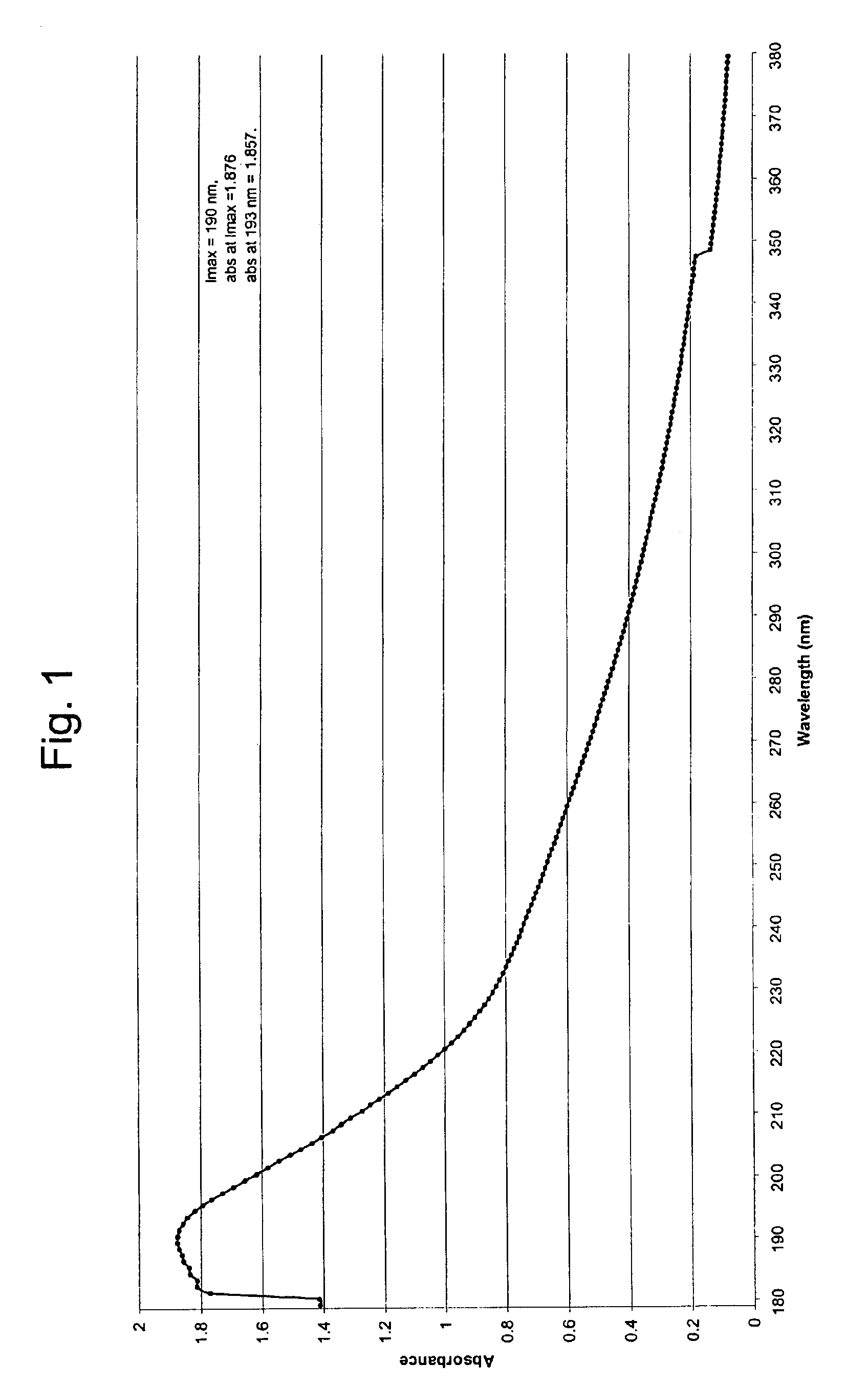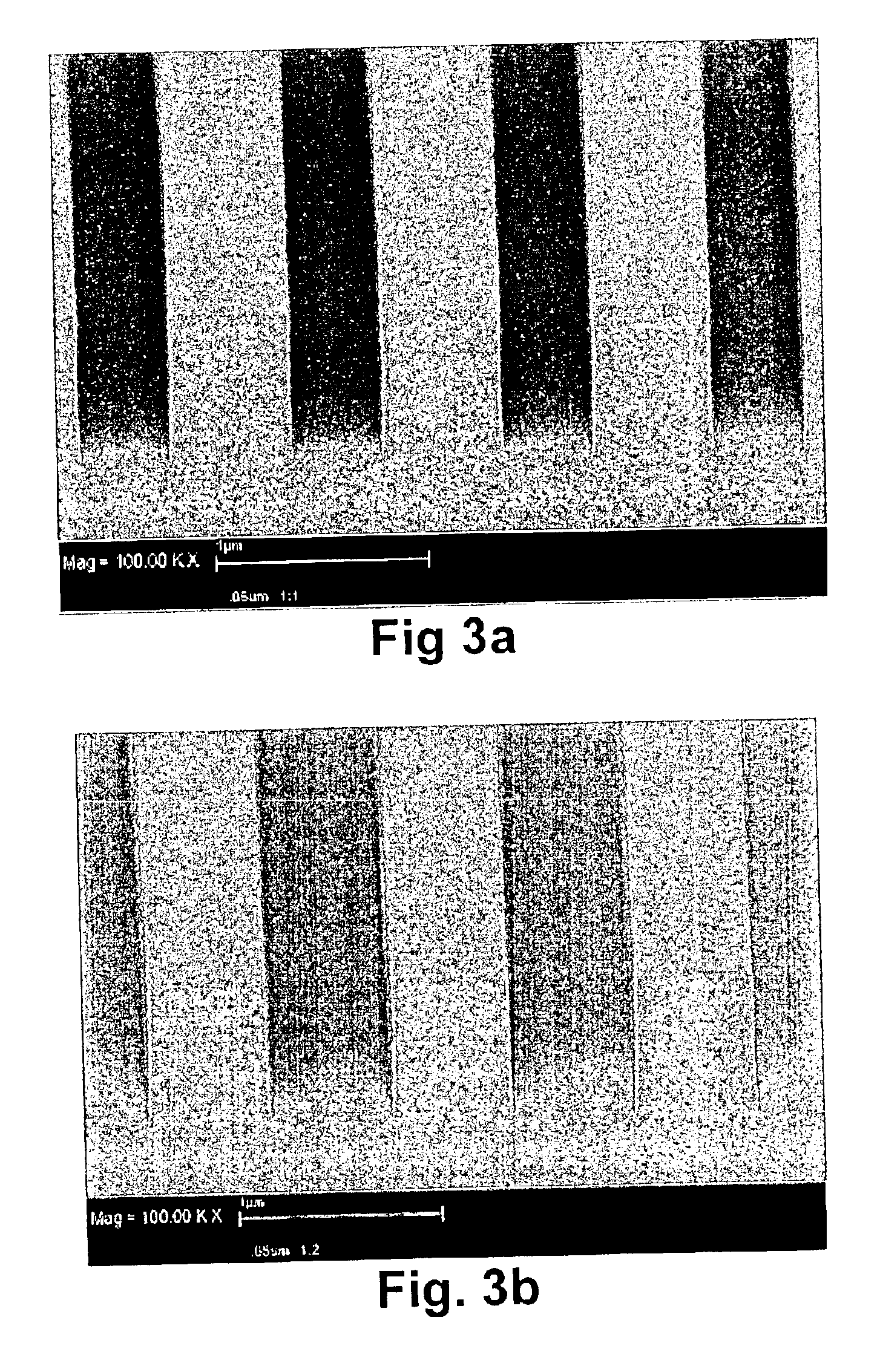Polymeric antireflective coatings deposited by plasma enhanced chemical vapor deposition
a technology antireflective coatings, which is applied in the direction of chemical vapor deposition coatings, resistive material coatings, metallic material coating processes, etc., can solve the problems of insufficient planarization, limited performance, and magnified inherent inefficiencies of spin coating processes, so as to minimize negative effects, reduce overall waste, and minimize was
- Summary
- Abstract
- Description
- Claims
- Application Information
AI Technical Summary
Benefits of technology
Problems solved by technology
Method used
Image
Examples
examples
The following examples set forth preferred methods in accordance with the invention. It is to be understood, however, that these examples are provided by way of illustration and nothing therein should be taken as a limitation upon the overall scope of the invention.
Materials and Methods
examples 1-3
The PECVD process to which the antireflective compounds were subjected in the following Examples 1-3 involved subjecting the compounds to sufficient electric current and pressure so as to cause the solid or liquid compounds to form a plasma. The monomers to be deposited were initially weighed in a glass vial (generally around 0.2 g although the amount consumed is not known). The vial containing the monomers was attached (via a rubber stopper) to a quartz chamber connected to a stainless steel pipe, with flow through the steel pipe being controlled by a needle valve. The quartz chamber was surrounded by an RF coil which, in turn, was connected to an RF generator. The RF generator generated the electric current in the quartz chamber through the RF coil. The quartz chamber was also connected to a deposition chamber in which the substrates were loaded.
The pressure of the system was increased to a level of from about 10-200 mTorr, more preferably from about 25-150 mTorr, and even more pr...
example 1
The deposition rate of phenylacetylene according to Example 1 was 200 Å / min., which is within the desired deposition range in the semiconductor industry standard for batch processing tools.
The film of phenylacetylene was deposited on silicon wafers, and the film thickness was optically measured by ellipsometry at 25 points on a planar silicon wafer to estimate the mean thickness. The phenylacetylene generated uniform coats, without pinholes, voids, or particles, having a preferred thickness of 400 Å. The films exhibited a thickness uniformity of >96% on 4-inch and 8-inch silicon wafers.
The solubility of phenylacetylene was examined by treating the film with solvents typically used in the semiconductor industry. The solvents evaluated were ethyl lactate and propylene glycol monomethyl ether acetate (PGMEA). Very little thickness loss was observed (see Table 2).
TABLE 2Stripping TestInitial Thick-Final Thick-StrippingSampleSolventness (Å)ness (Å)(%)phenylacetylenePGMEA9709620.8phenylac...
PUM
| Property | Measurement | Unit |
|---|---|---|
| boiling point | aaaaa | aaaaa |
| boiling point | aaaaa | aaaaa |
| pressure | aaaaa | aaaaa |
Abstract
Description
Claims
Application Information
 Login to View More
Login to View More - R&D
- Intellectual Property
- Life Sciences
- Materials
- Tech Scout
- Unparalleled Data Quality
- Higher Quality Content
- 60% Fewer Hallucinations
Browse by: Latest US Patents, China's latest patents, Technical Efficacy Thesaurus, Application Domain, Technology Topic, Popular Technical Reports.
© 2025 PatSnap. All rights reserved.Legal|Privacy policy|Modern Slavery Act Transparency Statement|Sitemap|About US| Contact US: help@patsnap.com



